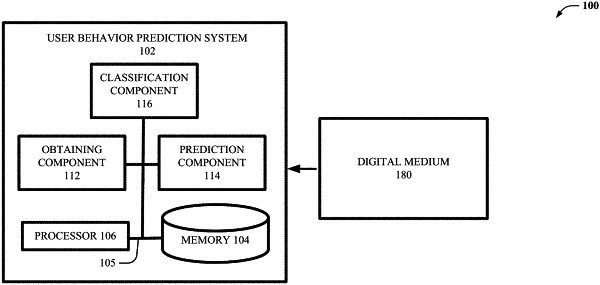| CPC G06Q 30/0255 (2013.01) [G06N 5/02 (2013.01)] | 20 Claims |

|
1. A system, comprising:
a memory that stores computer executable components; and
a processor that executes the computer executable components stored in the memory, wherein the computer executable components comprise:
a training component that:
trains, using a set of training data comprising interactions of users with digital mediums, a long short-term memory model employing at least one cross entropy loss function for a plurality of layers of the long short-term memory model to predict users next actions during the interactions with the digital mediums, and predict probabilities of conversion objectives being achieved with the users, and
trains, using the predicted users next actions, a Hidden Markov model to classify positions of the users along defined paths to the conversion objectives;
an obtaining component that obtains user behavior data from a digital medium, the user behavior data defining an interaction of a user with the digital medium;
a prediction component that determines, using the long short-term memory model, based on the user behavior data, a predicted next action of the user within the digital medium; and
a classification component that classifies, using the Hidden Markov model, based on the user behavior data and the predicted next action, a position of the user along a defined path to a conversion objective of the digital medium.
|